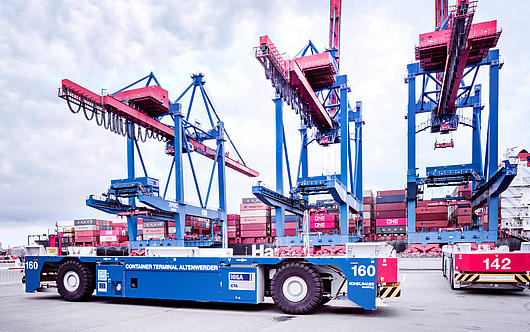
Inland waterway ships result in fewer emissions than trucks, are the quietest mode of transport and are considered especially powerful. Though many people associate inland shipping with the river Rhine, it also plays a major role on the Elbe with its adjacent network of waterways. In 2021, 11,000 inland waterway ships transported nearly seven million tonnes and around 123,000 TEU (standard containers) from and to the approximately 100 berths in the Port of Hamburg. Find out more about how inland waterway shipping works and the challenges it faces.
For reasons of capacity and cost, many goods can only be transported by inland waterway ship. Waterways are indispensable for Hamburg’s Hansaport, for example, in which HHLA is a shareholder. Germany’s biggest seaport terminal for bulk cargo deals with more than 10 percent of the total handling volume of the Port of Hamburg, equating to around 15 million tonnes of incoming tonnage every year. Onward transport takes place exclusively by inland waterway ship or rail.

Hamburg is Germany’s third-largest inland port
In the Port of Hamburg’s modal split – that is, the distribution of cargo volumes by mode of transport in hinterland traffic – inland waterway ships accounted for a 7.6 percent share of tonnage last year, and containers for 2.4 percent. After all, Hamburg is not only Germany’s largest seaport but also its third-largest inland port after Duisburg and Cologne – and also the largest inland port in the Elbe river area. Though the cargo generally comes from Germany or Czechia, the following map illustrates the port’s good connections to the pan-European canal and river network.
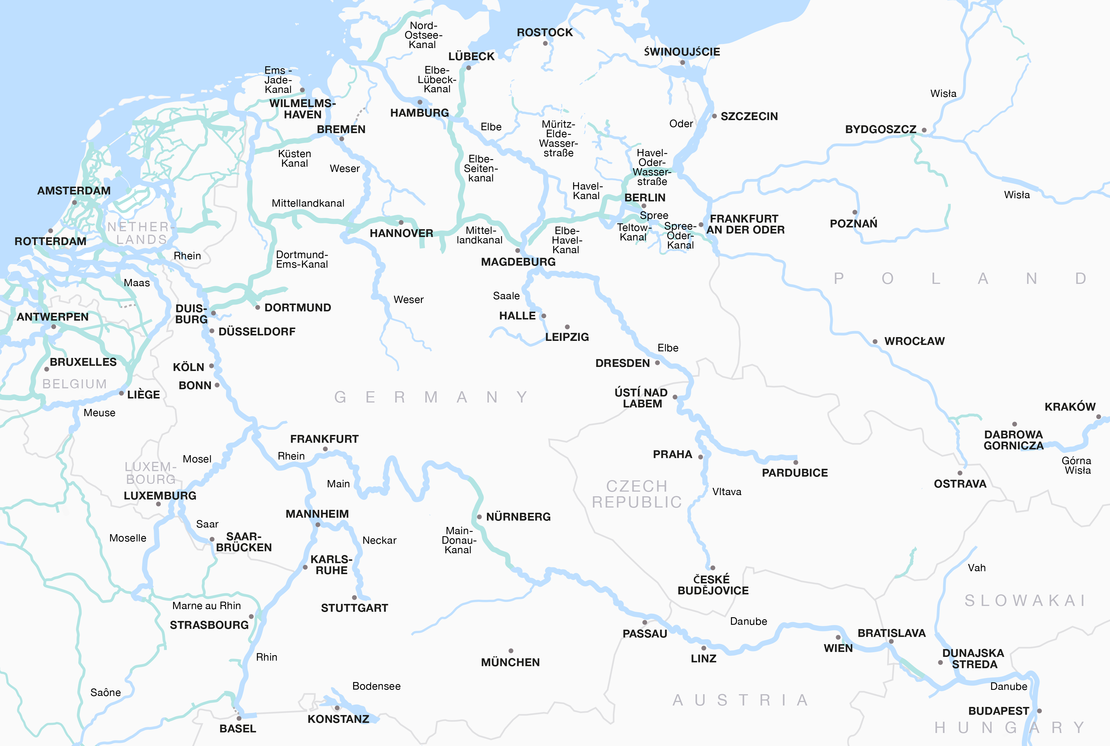
At 727 kilometres, the river Elbe is Germany’s longest navigable river. This places it ahead even of the Rhine, of which only 695 of its total 865 kilometres are navigable. The river Elbe’s potential for goods transport has not yet been sufficiently exploited, however. This also applies to other waterways, as the numbers show. In 2021, the share of goods transport that was shipped by inland waterway was just under seven percent, though road and rail capacities have largely been exhausted. Perhaps this is because the importance of inland shipping is still underestimated, at least by the general public?
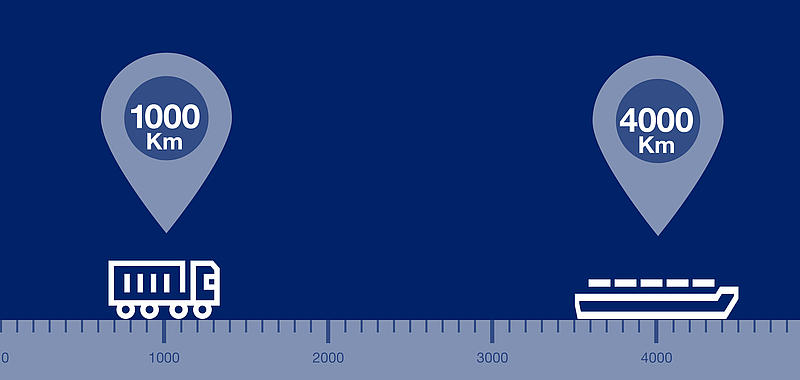
The previous government already wanted to increase the modal split to 12 percent. Now this mode of transport, and its importance for logistics, are increasingly in the spotlight due to the climate and energy crisis. The current government’s coalition agreement states: “We will adapt the fleet renewal programme to accommodate climate-friendly inland waterway shipping [...]. We will accelerate the renovation and expansion of locks.”
Unused potential of inland waterways
However, to achieve this, inland waterways such as the river Elbe must be made more easily navigable at many points. There are still a number of bottlenecks, such as the Scharnebeck ship lift. To mitigate this, the new Lüneburg lock, the highest in Europe, is being built in the direct vicinity. It is intended to compensate the height difference of 38 metres. With a chamber length of 225 metres and a width of 12.5 metres, it will in future be able to accommodate even the largest inland waterway ships on the canals. However, it will be a while until this is possible. Based on today’s plans, construction is due to begin in 2026 at the earliest.
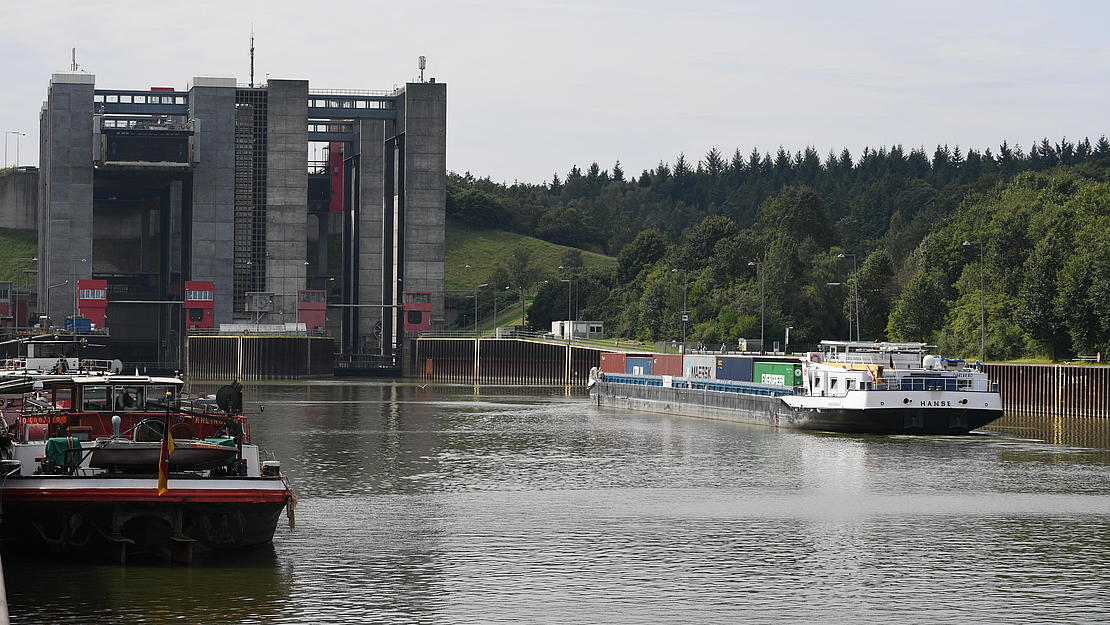
Crises lead to an increase in transport volumes
Such improvements to the system are urgently required, because it’s not just a question of shifting transport. Due to the gas crisis and the resulting reactivation of power stations, incoming transport volumes of coking and petroleum products rose by 85 percent across Germany in the first half of 2022, while outgoing volumes rose by 28 percent.

This also affects Hamburg with increasing demand from mid-August, for example, due to the Mehrum hard coal-fired power plant belonging to the Czech energy group EPH. In addition, the Leuna refinery will require crude oil, and grain is also increasingly being transported via inland waterway ship. Relevant transport concepts are currently being discussed, including inland waterway shipping.
There is also a high demand for project cargo. It is increasingly difficult to transport oversized and very heavy cargo on German roads, and inland waterway ships offer a practical alternative. Goods can be transported via waterway all the way to the Black Sea, as demonstrated in a HHLA project.
From Slovakia to Hamburg via waterway
In the absence of permits for the road transport of machine cabins for a large crane (6.5 x 11 metres, 50 tonnes) to the Burchardkai terminal, an alternative had to be found. The plan took off, and the machine cabins were transported by truck from the factory in Kechnec, Slovakia, to the capital, Bratislava. There, cargo was loaded onto an inland waterway ship that travelled via the Danube, the Main, Rhine, Mittelland Canal, and finally along the river Elbe to Hamburg.
As positive as these developments are, it must be borne in mind that waterways regularly struggle with fluctuating water levels. Low water levels mean ships can carry less cargo, or might have to stay in port – just as they might have to at high tide. This year, the river Elbe already registered low water levels from mid-June, and vessels requiring deeper water on the Rhine also had to reduce their cargo in some places.
It remains to be seen whether this problem will be exacerbated by climate change, and how quickly. The extent of the impact depends to a large degree on successes with climate protection and the adjustments that are made. Yet even with successful climate protection, there will still continue to be extreme low water situations and episodes.
Conflict between protecting nature and the environment
It’s clear that a consistent navigation channel depth of 1.60 metres for 345 days a year would sufficiently secure the reliability of the river Elbe as a transportation route. However, environmental protection associations such as Germany’s NABU only consider the expansion of inland shipping on artificial waterways to be viable. Although the river Elbe has been shaped by waterway engineering for nearly 200 years, even minor expansions are no longer considered compatible with the Water Framework Directive. Dredging would not lead rivers to achieve “good environmental status”, as politically intended. As a result, the desire to protect nature collides with the desire to protect the environment, which would benefit from greener transportation via inland waterway ship.

The river Elbe (or Labe in Czech) is a European river that has its source in Czechia and flows through Germany into the North Sea. It is the twelfth-longest river in Europe and one of the 100 longest rivers in the world. Because the Elbe does not flow into another river, it is considered a main stem. Today, the river is 1,165 kilometres long and its catchment area covers around 148,000 square kilometres.
In 2002, the red/green government coalition decided to temporarily halt expansion of the river Elbe as a result of the historic flooding that year. This moratorium aimed to ensure that the river was preserved not only as a major transport route in the European waterway network but also as an environmentally valuable part of the cultural landscape. In 2017, this was replaced with the adoption of the “Overall strategy for the Elbe” (GKE).
Five years on, opinions on it are divided. From a business point of view, implementation of the Overall strategy for the Elbe is progressing far too slowly. Only smaller measures that NABU deems practicable are allegedly planned to remove individual bottlenecks; however, nothing has moved beyond the planning process. Structural changes to benefit shipping are not yet apparent and are coming much too late, according to the Elbe Alliance. This is in particular contrast to our Czech neighbours, who are keen to use the river Elbe to access the North Sea.

“HHLA would welcome the transfer of cargo from the roads to the rivers in order to reduce transport emissions. Inland waterway ships offer major advantages against other modes of transport, for instance with project cargo, dry bulk and particularly heavy goods.”
Jan Hendrik Pietsch, Head of Sustainability/Energy Management Officer at HHLA
Comparatively climate-friendly but not modern enough
In view of all these challenges, it is not easy to present the advantages of inland waterway shipping as a viable alternative to shippers and forwarders. However, its appeal is growing because customers are increasingly focusing on the green credentials of their transport methods. It will be necessary to use modern drive and control concepts to emphasise this aspect. This mode of transport is already comparatively environmentally friendly, as this table shows: Environmental performance of inland waterway ship vs truck and rail. However, the long lives of diesel-powered ships result in corresponding emissions of nitrogen oxide and particulate matter (PM). This could lead to the establishment of start-ups in this segment. Until now, there has only been one research project, the pusher boat “Elektra”, which is completely emission-free because it runs on fuel cells.

Using hydrogen power on waterways
Inland waterway ships are already regarded as the most eco-friendly mode of transport between seaports and their hinterlands. Launched in June 2021 in Derben an der Elbe, the pusher boat Elektra is increasing standards even further.
It’s clear that increased digitalisation is essential and will be a major driver for the future viability of this mode of transport. Improved route planning and the associated precision in determining estimated times of arrival (ETAs) could help. There is also room for improvement in the communication between inland waterway ships and ports. The initiative recently established by Belgian technology and service provider Seafar shows where the journey could take us.
Concepts for (partially) autonomous inland shipping
Their innovative technology and supplementary services aim to make it possible to operate inland waterway ships with a skeleton crew. Here in Germany, Seafar is also working with the inland waterway shipping companies HGK Shipping and Deymann to develop concepts for (partially) autonomous inland shipping. Among other things, Seafar is investing in a remote-control centre in Duisburg which will enable the remote operation of ships in Germany starting in the first quarter of 2023.
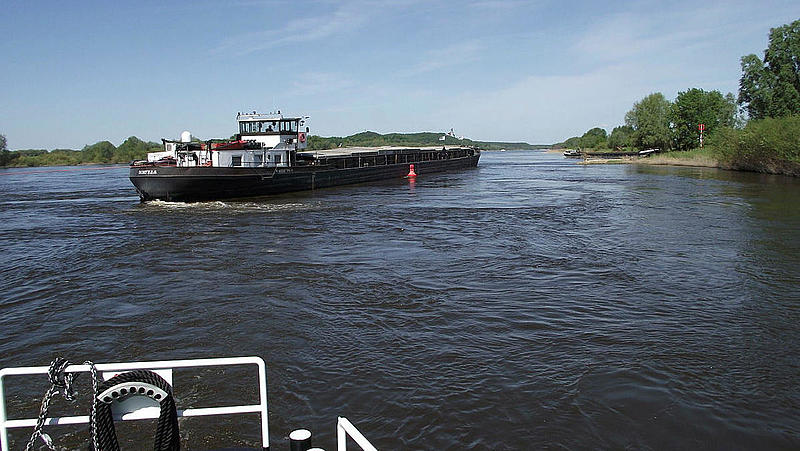
Two companies from the HHLA Group are also helping to strengthen the credentials of the environmentally friendly mode of transport. On behalf of the German Directorate-General for Waterways and Shipping (GDWS), HPC Hamburg Port Consulting analysed which information systems could be useful for ports and terminals to push ahead with the digitalisation of European inland waterways. The analysis by the leading logistics consultancy showed how much potential could still be leveraged with regard to the digitalisation of processes between the port and inland shipping. The seamless arrival and departure of ships in Hamburg is also partly overseen by the Hamburg Vessel Coordination Center (HVCC), a joint venture between HHLA and Eurogate.
Another example is the combination of information relating to waterways and traffic from 13 countries on the Euris platform (European River Information Services) eurisportal.eu. As of late September, the new web portal provides ship operators and their logistics partners on land with real-time data around the clock for reliable route and travel planning, particularly for journeys that cross international borders.
It remains to be seen to what extent the palpable transformation and new business models in the logistics sector will change the rather traditional inland shipping sector. From a political point of view, it also remains to be seen how much money the coalition government will actually assign to rejuvenating the inland shipping industry. One thing is clear: increased cargo transport on German waterways, and thus also through the Port of Hamburg, will only be possible with government support.
Three questions for Martin Staats, President of the Bundesverband der Deutschen Binnenschifffahrt (German Association for Inland Shipping, BDB)
What fast action could be taken to promote inland shipping, and why is it not being done?
The most important step would be for the political sphere to finally recognise that inland shipping is a systemically relevant and vital partner in the logistics chain, that it plays a major role in ensuring security of supply for the major industrial hubs in Germany, and that it acts accordingly. In concrete terms, this means that the budget must finally attribute sufficient funding to the sector in order to make the outdated waterways infrastructure usable again. Navigation channels – for example, in the Rhine, Main and Danube – must be optimised to remove bottlenecks in the waterway network, so transportation by ship can be better planned even when water levels are low. Locks need to be modernised and extended to significantly reduce their vulnerability to failures and to prepare the waterways to receive more goods via inland waterway ship, as desired by the EU and the German government.
And how do things look in reality?
Instead, we are currently greatly concerned to see the opposite: the government’s latest budget for German waterways means they will be significantly underfinanced by hundreds of millions. This means that key infrastructure projects enshrined in the Federal Transport Infrastructure Plan and German Waterway Expansion Act, which are proven to be of major benefit to the economy, continue to be delayed. We therefore petition the government to bring the status of our waterways up to an adequate level, to ensure the Federal Waterways Management Authority is sufficiently staffed, and to implement the waterway projects enshrined in the Federal Transport Infrastructure Plan as a matter of top priority. It would send a disastrous message to subject inland shipping to cuts. It is an environmentally friendly mode of transport, without which it will be impossible to achieve ambitious climate targets in the transport sector.
The excessively long time periods for the planning and implementation of infrastructure projects continue to be an enormous problem. Since Germany’s reunification, the way has been paved for more than ten new laws to accelerate the planning process. Unfortunately, not one of them has accelerated river development. While the timelines for the planning and construction of the LNG terminals in Wilhelmshaven very impressively show that schedules can be sped up where there is a high level of interest, for us, the orientation of the 2029 Bundesgartenschau [Federal Horticulture Show] in the Middle Rhine Valley threatens improved unloading between St. Goar and Mainz, which is so important for shipping and industry.
These false priorities are also poison for big corporations, which are threatened with declines in orders, job losses and a brain drain. Politicians must finally wake up. It is their job to get Germany moving rather than to create its irrelevance due to increasing de-industrialisation.
How much money is needed?
In terms of infrastructure, not accounting for the massive price hikes of the past few months, at least one billion euros are needed to maintain and expand the German waterway network. Another major challenge for the industry is greening the inland waterway fleet. In order to achieve anything like a carbon-neutral fleet by 2050, the Central Commission for Navigation on the Rhine calculated in a study that an average of around five billion euros would be needed. The magnitude of this investment shows that the rather traditional inland shipping industry is urgently reliant on support in the form of attractive funding programmes in order to retrofit its fleet to zero-emission systems. The German Federal Ministry of Transport and Digital Infrastructure’s “Sustainable modernisation of inland waterway ships” subsidy programmes promote the modernisation of the existing fleet. However, beyond this, it also necessary to set up the right funding options for the construction of new ships in order to achieve this modernisation.

